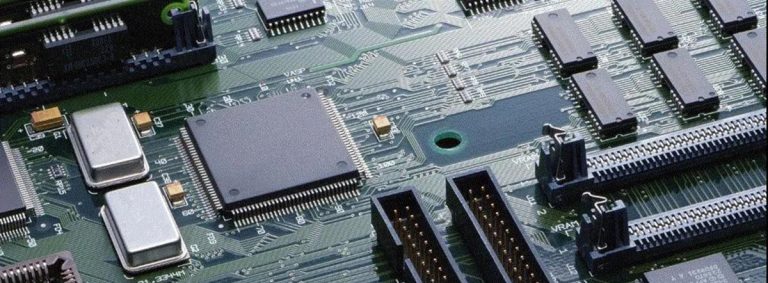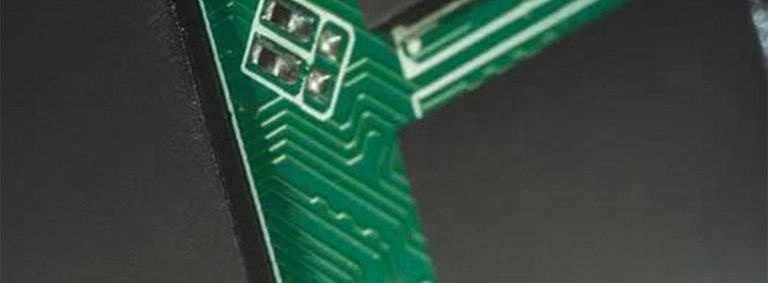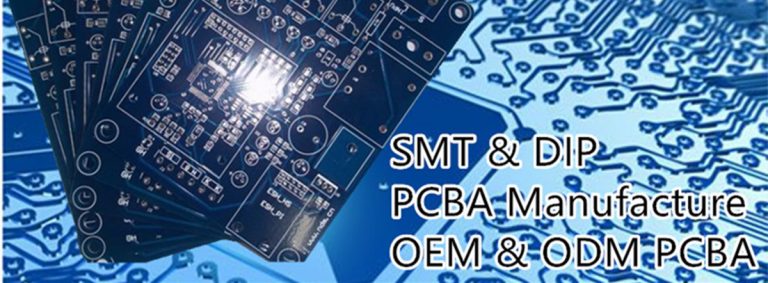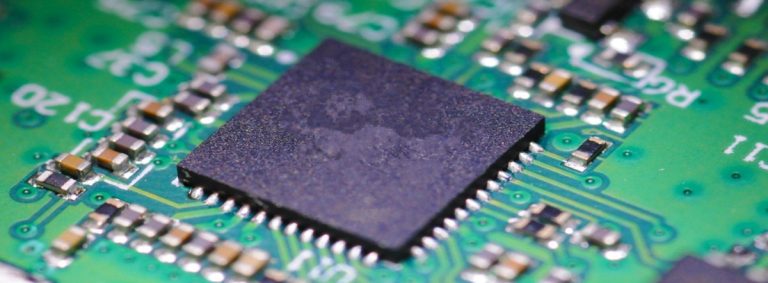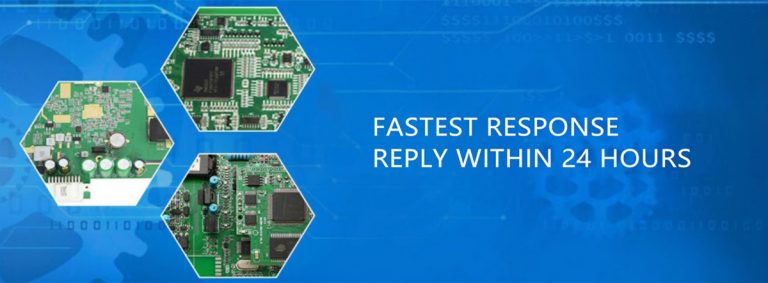PCB Finish Types Unveiled From Traditional Picks to Future Trends
1. Introduction to PCB Surface Finishes
In the realm of electronics, the Printed Circuit Board (PCB) is a marvel of human innovation, epitomizing our unyielding drive for miniaturization and optimization. It forms the bedrock of contemporary devices, ranging from the smallest wearables to colossal data centers. Yet, as any experienced electrical engineer or product designer would attest, a PCB is not merely a matrix of copper traces and components. It represents a meticulous blend of materials, design considerations, and PCB finish types. Among these, the topic of PCB surface finish often lingers in the backdrop, overshadowed by more dominant PCB discussions.
Surface finishes are, in essence, the unsung heroes of the PCB realm. They serve as the protective guardians of the copper traces, ensuring that they remain free from oxidation and corrosion. At the same time, they play a pivotal role in ensuring solderability, a factor that directly influences the integrity and longevity of the connections on a board. Yet, the choice of a surface finish is seldom a topic of casual conversation, even among industry experts. This is somewhat perplexing, given that the right (or wrong) finish can profoundly impact a PCB’s performance, lifespan, and even its environmental footprint.
The intricacies of choosing a PCB surface finish transcend the mere technicalities. They’re deeply intertwined with the larger narrative of the electronics industry, where innovations are ceaseless and the demands are ever-evolving. Today’s telecommunications industry, for instance, craves PCBs that can handle incredibly high frequencies without signal loss. Simultaneously, the automotive sector demands robustness and longevity, as PCBs become integral to everything from engine management systems to autonomous driving technologies.
The purpose of this article isn’t merely to enumerate the various finish types or to delve into their pros and cons. Instead, it’s to offer a holistic view, one that takes into account the technical, the historical, and the forward-looking aspects of PCB surface finishes. By the end, our aim is for readers – whether they’re procurement professionals in aerospace or product designers in electronics manufacturing – to possess a comprehensive understanding of not just what surface finishes are, but why their choice matters, now more than ever.
2. The Evolving Landscape of PCB Surface Finishes
The journey of PCB surface finishes is akin to a tapestry, intricately woven with threads of innovation, necessity, and technological evolution. While at its core, the primary purpose of a surface finish remains consistent – to protect exposed copper circuitry and ensure solderability – the variety and intricacies of finishes have witnessed substantial evolution over the decades. This evolution has been driven, in large part, by the relentless pace of technological advancement and the burgeoning demands of industries that hinge on electronic functionalities.
In the early days of electronics, the requirements were relatively straightforward. Components were larger, and the circuitry was not as densely packed as it is today. The surface finishes employed during these times were simple and served their purpose well. However, as electronic devices began shrinking and demands for miniaturization grew, the need for more sophisticated finishes became apparent.
To truly grasp the magnitude of this evolution, let’s embark on a brief chronological journey, highlighting some pivotal moments in the realm of PCB surface finishes:
The Age of HASL
The initial foray into finishes saw the dominance of Hot Air Solder Leveling (HASL). It was cost-effective and reliable for the time. However, as components shrank, the uneven surfaces produced by HASL became problematic.
The Rise of ENIG:
Recognizing the limitations of HASL, especially in the era of Surface Mount Devices (SMDs), the industry transitioned towards Electroless Nickel Immersion Gold (ENIG). Offering a flat surface, it catered perfectly to the mounting needs of tiny components.
The Green Revolution and OSP
As environmental concerns took center stage, finishes like Organic Solderability Preservatives (OSP) gained prominence. They were not only effective but also posed fewer environmental hazards.
Exploring Alternatives
With the boom in diverse electronic applications, finishes like Immersion Silver and Immersion Tin started gaining traction, each catering to specific niches within the broader electronics domain.
The chronicle above is but a snapshot of the larger evolution, as detailed in this informative piece by PCB International. As the article aptly summarizes, PCB surface finishes serve as a vital interface between components and interconnection circuitry, a role that has only grown in significance with time.
But beyond the mere technical progression, what’s truly fascinating is the interplay of external factors with the choice of finishes. For instance:
- Regulatory Changes: The introduction of RoHS (Restriction of Hazardous Substances) led to a shift away from lead-based finishes, ushering in an era of lead-free soldering and finishes.
- Consumer Demands: As devices became more ubiquitous, the demand for reliability and longevity shot up, leading to finishes that could withstand rigorous daily use.
- Industrial Specificities: Different industries, be it aerospace, telecommunications, or automotive, brought in unique requirements, pushing the envelope on what surface finishes could deliver.
In essence, the evolving landscape of PCB surface finishes is not just a tale of technical growth. It’s a mirror to our societal, environmental, and industrial aspirations. And as we stand on the brink of another technological revolution, with the Internet of Things (IoT), Artificial Intelligence (AI), and quantum computing becoming everyday realities, one can only wonder: What’s the next chapter in the saga of PCB surface finishes?
3. Common PCB Surface Finish Types and Their Characteristics
The vast array of electronics applications today, from aerospace systems to consumer electronics, demands a diversified range of PCB surface finishes. Each finish boasts its unique set of properties, catering to specific requirements and challenges. For our audience, which includes electrical engineers, product designers, and procurement professionals, it’s paramount to understand these finishes’ nuances. Doing so ensures the creation of products that are not only efficient and reliable but also cost-effective.
Below is a colorful table that encapsulates the key characteristics of some of the most common PCB surface finish types:
| Surface Finish | Description | Advantages | Disadvantages |
|---|---|---|---|
| HASL (Hot Air Solder Leveling) | Traditionally used finish with solder applied to exposed copper. | Cost-effective, reliable track record. | Uneven surfaces, not ideal for fine-pitch components. |
| ENIG (Electroless Nickel Immersion Gold) | Combination of nickel layer capped with a thin layer of gold. | Flat surfaces ideal for SMT, good corrosion resistance. | Risk of black pad syndrome, slightly higher cost. |
| OSP (Organic Solderability Preservatives) | Finish using organic compounds to protect the copper. | Environmentally friendly, clean surface for soldering. | Sensitive to handling, shorter shelf life. |
| Immersion Silver | Finish suitable for applications demanding fine-pitch components. | Good shelf life, suitable for fine-pitch components. | Tarnishing if exposed, requires controlled environment for storage. |
| Immersion Tin | Lead-free solution offering flat surfaces. | Suitable for various applications, lead-free. | Risk of whisker growth, tin pest at very low temperatures. |
HASL (Hot Air Solder Leveling)
The tried-and-true, HASL has been a mainstay for decades. While it’s the most cost-effective, its method of leveling using hot air can lead to uneven surfaces. This makes it less suitable for modern electronics that rely heavily on fine-pitch components.
ENIG (Electroless Nickel Immersion Gold)
ENIG emerged as a response to the limitations of HASL. By employing a nickel layer capped with a thin layer of gold, it offers exceptionally flat surfaces, making it ideal for Surface Mount Technology (SMT). However, it’s slightly pricier and occasionally plagued by the ‘black pad’ syndrome, a rare but critical issue.
OSP (Organic Solderability Preservatives)
A nod to the industry’s push towards eco-friendliness, OSP is a finish that uses organic compounds to protect the copper. While it offers a pristine surface for soldering, it’s sensitive to handling and has a comparatively shorter shelf life.
Immersion Silver
Immersion Silver finds its niche in applications that demand fine-pitch components. While it provides a good shelf life, it’s vulnerable to tarnishing if exposed to certain elements. Storage, therefore, requires a controlled environment.
Immersion Tin
A lead-free solution, Immersion Tin is praised for offering flat surfaces, making it suitable for a wide array of applications. However, potential challenges include whisker growth and the rare occurrence of tin pest at extremely low temperatures.
4. Key Considerations When Choosing a PCB Surface Finish
For decision-makers in the electronics manufacturing, aerospace, automotive, and telecommunications sectors, choosing the right PCB surface finish is akin to threading a needle. It’s not merely about the finish itself but about how it aligns with broader project goals, industry standards, and emerging trends. With that in mind, let’s delve into some often-overlooked considerations that can be pivotal in making an informed choice.
4.1 Cost Implications
While it’s tempting to gravitate towards the most cost-effective option in PCB manufacturing cost, it’s crucial to assess the total cost of ownership (TCO). This encompasses not just the immediate cost of the finish, but also:
- Long-term maintenance costs
- Potential rework expenses due to finish-related issues
- The cost implications of reduced product longevity
4.2 Performance and Reliability
The technical specifications of a finish are undeniably essential, but how do they translate to real-world performance? Factors to ponder include:
- Thermal Performance: How does the finish fare under extreme temperatures, especially if the PCB is destined for aerospace or automotive applications?
- Signal Integrity: Particularly vital for telecommunications, how does the finish impact signal transmission and overall PCB performance?
4.3 Environmental Concerns
With industries moving towards sustainable practices, the choice of finish becomes not just a technical decision but an ethical one. Reflect on:
- The carbon footprint of producing the finish
- Its recyclability and disposal impact
- The potential hazards it might pose during the product’s lifecycle
4.4 Assembly Requirements
The finish is, in many ways, the bridge between the PCB and its components. Hence, understanding assembly intricacies is paramount:
- Component Compatibility: Does the finish support the mounting of diverse components, especially in multi-functional PCBs?
- Reflow Considerations: How does the finish react under multiple reflow cycles, especially in complex assembly scenarios?
5. The Interplay of Industry Demands and Surface Finish Choices
Within the expansive realm of electronics, specific industries wield distinct requirements, often dictating the nuances of design, manufacturing, and, by extension, the choice of PCB surface finishes. As professionals entrenched in sectors like aerospace, telecommunications, or automotive, understanding this symbiotic relationship between industry demands and surface finish choices is indispensable. Let’s journey through some of these industries to elucidate how their unique needs sculpt the decision-making landscape.
5.1 Aerospace and Defense
A sector where precision, reliability, and longevity are paramount, aerospace and defense present a unique set of challenges:
- Extreme Environments: PCBs in aerospace often grapple with radical temperature fluctuations, necessitating finishes that can withstand such rigors without compromising performance.
- Longevity: With aircraft and defense systems having extended lifecycles, the chosen finish must exhibit exceptional durability, resisting wear and tear over prolonged periods.
- Safety and Compliance: Given the critical nature of aerospace applications, finishes must not only be performance-oriented but also adhere to stringent safety and regulatory standards.
5.2 Automotive
As vehicles transform into sophisticated electronic hubs, the role of PCBs becomes increasingly central:
- Vibration Resistance: With vehicles being dynamic entities, PCB finishes need to offer resilience against constant vibrations, ensuring solder joints and connections remain intact.
- Miniaturization: Modern vehicles, especially electric variants, emphasize compactness. This pushes for finishes that support densely packed components without hindering solderability.
- Heat Resistance: Engine bays, proximity to batteries, or high-performance electronics can generate substantial heat, making it imperative for finishes to endure such thermal challenges.
5.3 Telecommunications
In an era of 5G and beyond, telecommunications equipment demands PCB design manufacturing that are nothing short of exemplary:
- High-Frequency Performance: As data transmission rates skyrocket, finishes must support these frequencies without introducing undue noise or interference.
- Scalability: With telecom infrastructure evolving rapidly, finishes should be compatible with emerging technologies, ensuring they remain relevant even as the industry transforms.
- Durability: Given that much of the telecom equipment might be stationed outdoors, resistance to environmental factors like humidity becomes crucial.
6. Future Trends in PCB Surface Finishes
As we gaze into the horizon of electronics manufacturing, it’s palpable that we’re on the cusp of revolutionary shifts. The PCB, a cornerstone of this domain, will undoubtedly be at the forefront of these transformations. And as with all things PCB, the surface finish, often an unsung hero, will play a pivotal role in navigating the challenges and opportunities of tomorrow. So, what might the future hold for PCB surface finishes?
6.1 Embracing Eco-Friendly Finishes
As industries globally rally towards sustainability, the PCB sector is no exception. The future will likely witness:
- Greener Production Processes: Finishes that employ environmentally benign production methods, reducing waste and energy consumption.
- Biodegradable Finishes: Innovations might lead to finishes that can degrade without leaving toxic residues, aligning with circular economy principles.
6.2 Tailoring for Advanced Electronics
With electronics scaling unprecedented complexities, finishes will need to keep pace:
- Quantum Computing: As we inch closer to quantum supremacy, PCBs will require finishes that can support super-cooled environments and ultra-sensitive quantum bits or qubits.
- Flexible and Wearable Electronics: The surge in wearables and flexible devices will push for finishes that can endure constant bending and flexing without degradation.
6.3 Enhanced Signal Integrity
The insatiable appetite for faster data transmission and processing will usher in finishes that prioritize signal integrity:
- Higher Frequency Support: As 6G and beyond loom on the horizon, finishes that can seamlessly support these high frequencies will be paramount.
- Noise Reduction: Minimizing electronic noise will be crucial, leading to finishes that offer impeccable signal-to-noise ratios.
6.4 Integration with Smart Manufacturing
The Industry 4.0 wave, characterized by smart manufacturing and AI-driven processes, will reshape PCB finishes:
- Self-Healing Finishes: Imagine finishes that can self-repair minor damages, ensuring the PCB remains functional even after minor wear and tear.
- Real-time Monitoring: Finishes embedded with nano-sensors, capable of real-time health monitoring of the PCB, alerting maintenance teams of potential issues before they escalate.
7. Conclusion: Making an Informed Decision
In the intricate dance of electronics manufacturing, the choice of a PCB surface finish is a decision that resonates through the lifecycle of a product, influencing its performance, longevity, and overall impact. For professionals navigating the realms of aerospace, telecommunications, automotive, and beyond, this choice is emblematic of a commitment to excellence, innovation, and forward-thinking.
Yet, as we’ve journeyed through the multifaceted world of PCB finishes, it’s evident that making this choice isn’t merely about understanding technicalities. It’s about aligning with the ethos of an industry, embracing future trends, and ensuring a harmonious marriage between current needs and future aspirations.
As we stand on the precipice of technological breakthroughs, the need for collaboration, expertise, and shared knowledge becomes paramount. The journey of selecting the right finish is not one to embark upon alone. It requires insights, expertise, and a deep understanding of both present challenges and future possibilities.
Ready to make an informed decision that sets the foundation for your product’s success? We invite you to leverage our two decades of experience in the PCB industry. Send us an inquiry, and together, let’s chart a path to electronic excellence.


